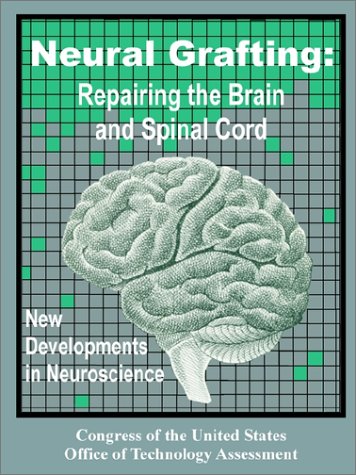
Neural Grafting: Repairing the Brain and Spinal Cord
Publisher: US Congress Office of Technology Assessment 1990
ISBN/ASIN: 0898759072
Number of pages: 193
Description:
This special report discusses the field of neural grafting into the brain and spinal cord to treat neurological disorders. It describes the technology of neural grafting, the neurological conditions that it may be used to treat, and the patient populations that are affected. Also, the legal and ethical issues raised by the development of neural grafting techniques are discussed.
Download or read it online for free here:
Download link
(5.9MB, PDF)
Similar books
 Atlas of the Brain
Atlas of the Brainby Rand S. Swenson - Dartmouth Medical School
Modules: Atlas of Gross Brain Topography; Atlas of the Brain Stem in Cross Section; Atlas of the Brain in Axial Slices; Atlas of the Brain in Coronal Slices; Atlas of the Head in Axial Slices; Axial T1-weighted MRI; Coronal T2 MRI; etc.
(12752 views)
 In the Light of Evolution: Volume VI: Brain and Behavior
In the Light of Evolution: Volume VI: Brain and Behaviorby G.F. Striedter, J.C. Avise, F.J. Ayala (eds) - National Academies Press
The central goal of the series is to promote the evolutionary sciences through state-of-the-art colloquia. This volume focuses on the field of evolutionary neuroscience that now includes a vast array of different approaches, data types, and species.
(11409 views)
 Multiple Sclerosis: Perspectives in Treatment and Pathogenesis
Multiple Sclerosis: Perspectives in Treatment and Pathogenesisby Ian S. Zagon, Patricia J. McLaughlin - Codon Publications
This book on the pathophysiology of multiple sclerosis concentrates on the potential etiology and treatment of multiple sclerosis, and basic studies discussing mechanisms and pathways involved in the development and progression of the disease.
(5568 views)
 Understanding Alzheimer's Disease
Understanding Alzheimer's Diseaseby Inga Zerr (ed.) - InTech
Alzheimer's dementia affects 6 million Europeans with 10 percent of people over age 65 and more than a quarter over 85. Given the steady aging of European societies, dementia and cognitive decline have developed into a major health problem...
(9848 views)